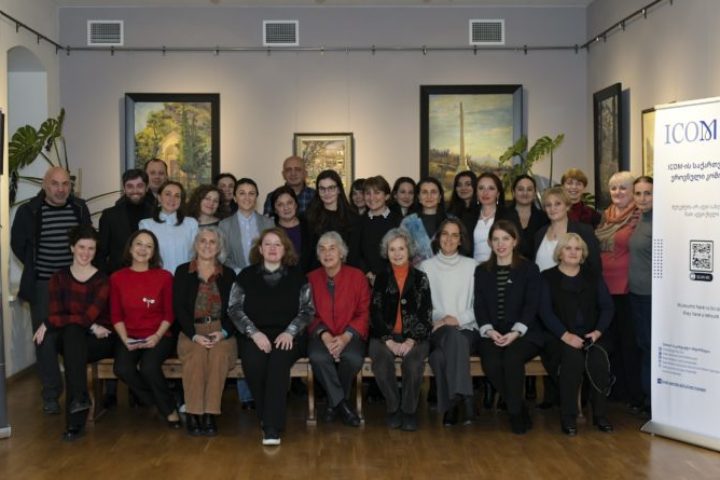January 18, 2025
Report: ICOM Europe 2024 Training Series in Tbilisi Training

Building Heritage Resilience: Report on the ICOM Europe 2024 Training Series in Tbilisi
Overview
Over three intensive days (25–27 November 2024), the program addressed five interconnected topics essential for heritage preservation: Disaster Risk Management and Emergency Preparedness, Emergency Evacuation Procedures, Documentation and Restoration Techniques, People-Centered First Aid for Cultural Heritage, and Crisis Communication.
The project is funded by the ICOM International SAREC Grants and was organized and supported by ICOM Europe and ICOM Georgia, in collaboration with ICOM international and national Committees including ICOM DRMC, ICOM MPR, ICOM France, ICOM Austria, ICOM Belgium, ICOM Italy, and Blue Shield France, Blue Shield Georgia, Opificio delle Pietre Dure, Istituto Centrale per il Restauro, and the Tbilisi Museums Union.
Programme Overview
Day 1: Disaster Risk Management and Emergency Preparedness
The training series opened with a focus on one of the most pressing challenges facing museums today: ensuring the safety and preservation of cultural heritage in the face of disasters. With increasing threats from both natural and human-induced crises, this topic underscored the vital role of preventive strategies and ethical responsibility in museum operations.
The day concluded with a tour at the Ilia Chavchavadze Literary-Memorial Museum, where participants were introduced to its historical significance and the practical challenges of safeguarding heritage in a local context.
Day 2: Emergency Evacuation Procedures and People-Centered First Aid for Cultural Heritage
Future Perspectives
The ICOM Europe 2024 Training Series served as a vital step in reinforcing the collective responsibility to protect cultural heritage, emphasizing that this work is a continuous, collective effort. As participants return to their institutions, the knowledge and skills they have acquired will contribute to a more proactive, prepared, and resilient heritage community.
Looking ahead, the ICOM Europe 2024 Training Series will continue to evolve in response to emerging challenges in heritage protection. Future efforts may focus on:
- Expand training scope: Include topics such as digital preservation, post-crisis recovery, and climate resilience to address evolving challenges. With the growing importance of digital archives and the challenges posed by both natural and man-made disasters, future courses could focus on digital preservation strategies and post-crisis recovery planning. This would help professionals navigate the complexities of safeguarding both physical and digital heritage.
- Adapt to emerging threats: Develop strategies to counter climate-related risks and digital vulnerabilities. As climate change continues to impact cultural heritage, the training could evolve to offer climate resilience training, equipping professionals to adapt to these environmental challenges and protect cultural assets against rising risks.
- Strengthen collaboration: Foster global networks to share expertise and pool resources. To foster a sustained exchange of knowledge, future programs could create long-term collaboration networks, encouraging international partnerships and cross-border learning. By expanding collaboration with global experts and institutions, the course could evolve into a key forum for heritage professionals to stay updated on best practices, share research, and innovate together.
- Enable continuous learning: Create digital platforms for access to training materials, case studies, and ongoing professional development. To ensure ongoing support for museum professionals, a digital platform could be developed, offering access to training materials, case studies, webinars, and other resources. This would help ensure that professionals continue to develop their skills in a rapidly changing world, providing flexibility for continuous education and networking.